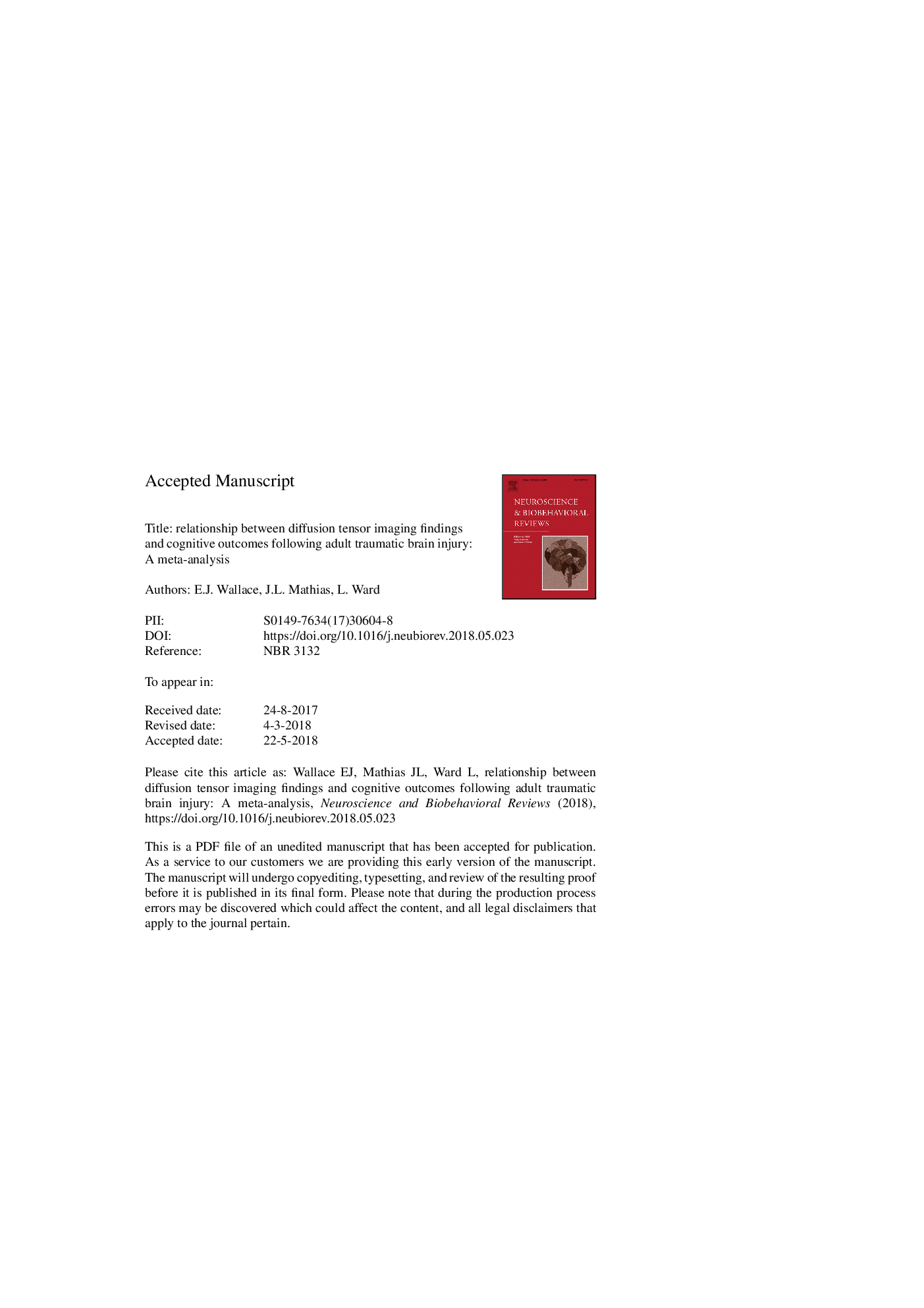| Article ID | Journal | Published Year | Pages | File Type |
|---|---|---|---|---|
| 7301557 | Neuroscience & Biobehavioral Reviews | 2018 | 37 Pages |
Abstract
Cognitive impairments are common following a traumatic brain injury (TBI) and frequently result from white matter (WM) damage. This damage can be quantified using diffusion tensor imaging (DTI), which measures the directionality (fractional anisotropy: FA) and amount (mean diffusivity/apparent diffusion coefficient: MD/ADC) of water diffusion in WM, with high FA and low MD/ADC thought to indicate greater WM integrity. However, the relationship between DTI and cognitive outcomes is currently unclear. The data from 20 studies that examined the relationship between WM integrity (measured using DTI) and cognition (categorised into seven domains) following mild-severe adult TBI were meta-analysed. Overall, high FA and low MD/ADC in most brain regions was associated with better cognitive performance, with memory and attention most strongly related to DTI findings. Specifically, memory and/or attention were very strongly related to DTI findings in the corpus callosum, fornix, internal capsule, arcuate and uncinate fasciculi. However, most findings were based on single studies and therefore await replication. Larger-scale, longitudinal studies are now needed to determine the predictive utility of DTI.
Related Topics
Life Sciences
Neuroscience
Behavioral Neuroscience
Authors
E.J. Wallace, J.L. Mathias, L. Ward,
